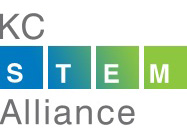14 Oct 2022 Reflections on the messy work
By Christina Chandler, Director of Diversity, Equity and Inclusion for the KC STEM Alliance
A couple of years ago, I came home from work and saw signs around the neighborhood about Google Fiber coming into my community. At the time, I had high-speed internet access and had for years. Although internet access in my area could be costly, my family had the privilege of having the resources to afford the service.
I was happy to see and hear that lower-cost high-speed internet access was coming to my neighborhood, knowing it would allow those who couldn’t afford the previous service to access high-speed internet.
But then the work began. As Google started to install the cabling required to bring internet access to my neighborhood, things got a bit messy. Within a few weeks, the installers had destroyed my yard.
I lost sight of the benefits this would bring to my community. Dirt and mud was everywhere, the grass was destroyed, and the yard looked awful. They accidentally cut the line to my cable, and I lost access for several hours. There were not enough people to complain to, and I could not yell and scream loud enough about what I had lost.
Changing systems of any kind can be complex and messy. And disrupting systems and programs that have historically excluded marginalized communities is even more challenging and messy.
Human beings really do not like to be disrupted, especially when the systems in place work for most people. Some may question why we need to disrupt things if they are working for most.
The answer is simple: We won’t have systems that work for everyone without disruption. The systems that oppress Black and brown people took centuries to create. It wasn’t until 1834 that Black people were allowed to learn how to read and write. It was not quite 70 years ago when the 1954 landmark Brown v. the Board of Education decision allowed Black students to attend school with white students.
Tearing down these systems will take time, innovation, and a willingness to destroy and disrupt the status quo. This work will be complicated and messy, and not everyone will be on board. We must develop strategies to bring the less willing along and help them see the value in this journey.
Identifying common ground is always a helpful strategy. We are all doing this work to ensure the best future for the students we serve, the communities we serve, and this city that we love. We need to keep those commitments at the forefront of our work and ensure everyone we work with understands our commitment to this work.
A couple of months after the Google Fiber people showed up; we started getting advertisements in our neighborhood for lower-cost internet. I had lived in my neighborhood for over 15 years, and there had only been one option for an internet provider. Now, there were two! Google brought in people to repair my yard and plant grass seed. By the following spring, there was no sign that Google was ever there, and the grass that I was so upset about grew back!
Learn more about moving beyond the racial gap in STEM education.




